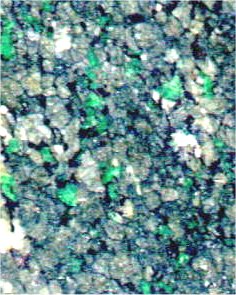
June Editorial
The origin of Diamonds

June Editorial
The origin of Diamonds
|
|
The common theory about the origin of diamonds is that they are formed from the movement of carbon-rich fluids into rocks deep in the mantle of the earth. Because the mantle rocks have a contrasting composition to the carbon-rich fluids, the reaction to the two, under conditionsof immense heat and pressure precipitates the formation of crystalline carbon if the form which we know as diamonds. However, this straightforward theory has been complicated by the recent studies of Dr Thomassot, a post-doctoral fellow from the Department of Earth and Planetary Sciences at McGill University. She and her co-workers have been studying the origin of diamonds by comparing the composition of multiple samples from a single diamondiferous peridotite xenolith ('Diamondiferous' means 'containing diamonds' 'peridotite' is a trype of stone, and a xenolith is a rock which is completely enclosed by another rock of a different mineral type. In Greek 'Xeno' means 'foreign' and 'lith' refers to stone.) Diamonds are recovered from two sources:
Because the diamonds from secondary sources mayn have travelled some considerable distance, and there is no way to determine their precise origin, the group from the McGill University concentrated on samples obtained from a kimperlite mine in South Africa. However, since even diamonds within a single kimberlite pipe can differ significantly depending on the depth, the time of formation, and changes in the composition of the kimberlite, the group decided to use a single xenolith to make sure that all the diamonds which they studied were from the same time and were formed under the same conditions. This xenolith was a peridotite fragment composed of garnet, olivine, and orthopyroxene. This xenolith in question contained diamonds although it was only 27 cm3 in volume. From that sample the team managed to recover 59 diamonds which varied in size from 0.0005 to 0.169 carats (1 carat=200 milligrams). The group's research into the composition of the diamonds focussed on the nitrogen content and isotopic values of their samples. They found a large variation of nitrogen composition in the samples which they studied. Not only was the amount of nitrogen widely different but also the composition of nitrogen and carbon isotopes. That was the first time that anyone has observed such a widespread variation in a single xenolith, a sample in which the different diamonds should all be very similar if the common theory about their origin was correct. The implication of this study, which was published last month in "Earth and Planetary Science Letters", is that these diamonds formed from a methane-rich fluid, not the more oxidized fluid which is commonly assumed. It seems the most precious of stones is still keeping a few mysteries to itself. |
| _______________________________ | ||||
| Home | | | Shopping | | | Database |
© Biscuit Software 2004-2015
All rights reserved